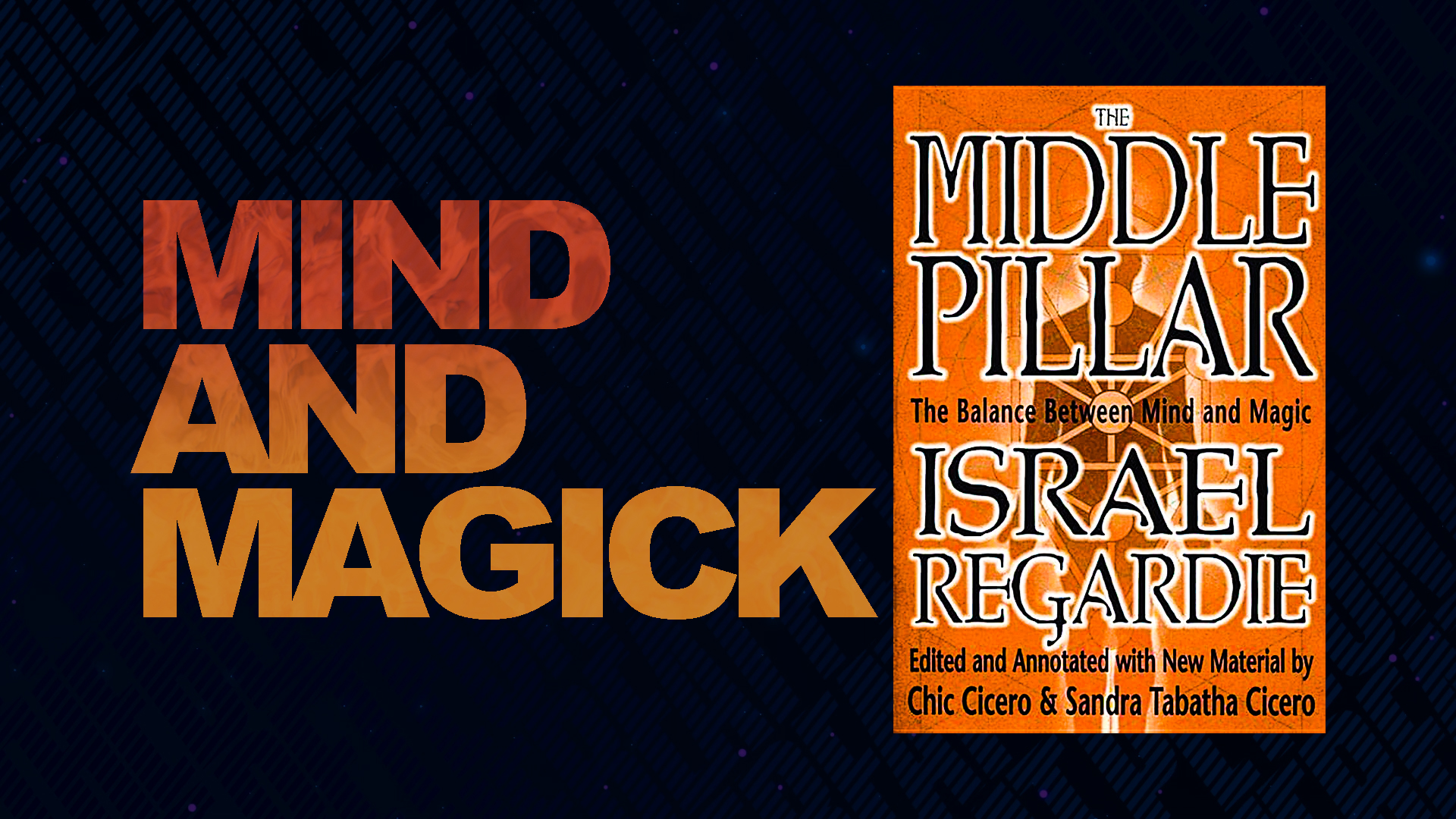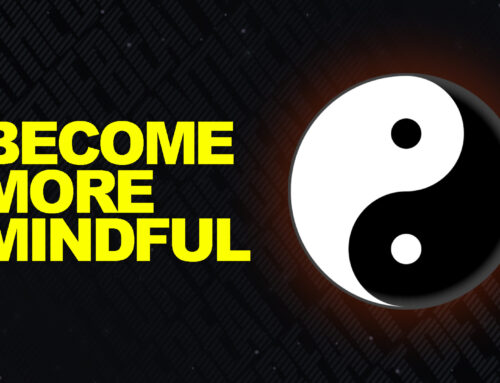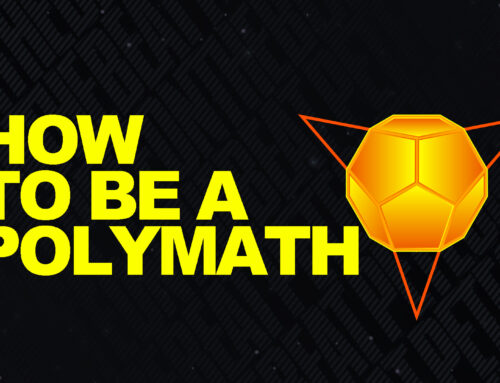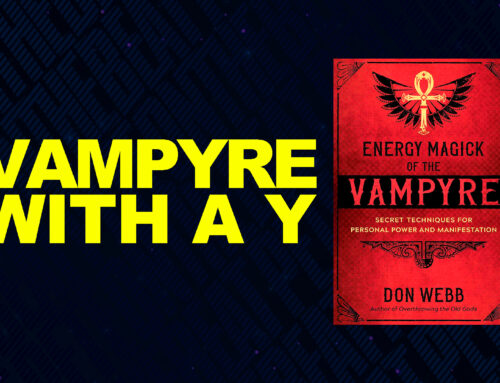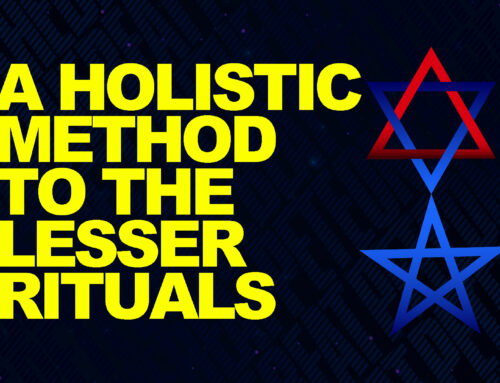Introduction
This video reviews the third edition of Israel Regardie’s The Middle Pillar. Besides discussing my favorite parts, I’ll give some background on the book’s creation close to a century ago. Annotated and edited by Sandra Tabatha and Chic Cicero, the Middle Pill is jampacked with information. So with this video, I am only scratching the surface.
A Modern Occult Classic
Regarded as a modern magickal classic by Donald Michael Kraig, Israel Regardie’s the Middle Pillar is (often) one of the first books millennial magicians get. Essential to those working with Qabalah, the book bridges the Western and Eastern systems with psychoanalytic models like those of Georg Groddeck, Sigmund Freud, Carl Jung, and Roberto Assagioli.
The Impact on Modern Scholars
Speaking of that, and based on my research, the Middle Pillar played a pivotal moment in the careers and practices of people like Dr. David Shoemaker, Dr. Christopher Hyatt (RIP) and Sandra Tabatha, and Chic Cicero, who added new material to it.
Background
The Middle Pillar was completed in 1936, preceding the Art of True Healing, which I can also review if my viewers are interested. It was also dedicated initially to Samuel Lidell MacGregor Mathers and Dr. William Wescott, the founders of the Golden Dawn.The Middle Pillar was first published in 1938. One year after, Regardie published the four volumes of the Golden Dawn, such as other books on the same system. Back then, that was pretty ‘unthinkable’ because of the secrecy veiling western occultism. Yet, having unmatched understanding, Regardie went further, recognizing magick and psychology going hand in hand. Apparently, they both deal with one thing, which is the human mind.
Mind and Magick
“It would be totally absurd for anyone to minimize all that has been achieved by modern psychology due to the efforts of such astute investigators as Freud and Jung. But it is abundantly clear that their protagonists — psychological extremists — go entirely too far in disclaiming the intelligence and insight of our predecessors…”
“Some orthodox diehards may question the relationship of modern psychology with discredited oriental and archaic techniques for the unfolding of man’s higher spiritual nature. In practice, however, such a relationship does inevitably exist. It is a fact of clinical and consulting-room experience…”
The Psychologies of the Past
Regardie calls Yoga and Magick the ‘psychologies of the past.’ He explains that psychology’s primary advance is making all its devices available to the average person. In contrast, practicing magick was possible only for a select few in the past. The author views Magick and psychology as the two halves of the same system. Just like he views the mind and body as the two segments of the mind-body organism. Magick and Psychology, Regardie explains, share the same goal. That is the integration of the human personality, so there’s unity between the different functions and the human being.
The Role of Psychology in the Great Work
In the same section, Regardie emphasizes one of the things he’s most well-known for. Namely, some form of psychoanalysis should be essential when approaching the Great Work. This, he clarifies, provides the aspirant with a higher degree of self-knowledge.
“Possibly for the first time in the history of civilized thought, there is a technique which is of inestimable value to the average man. It is of supreme value to the student of magic and mysticism, who, too often, labors under several delusions of what it is that he homes to accomplish and in what length of time he will do so. A study of analysis will prove, first of all, that he cannot proceed quicker than his own unconscious permits him. This will prevent gate crashing and an irrational enthusiasm and desire for speed…”
The Psyche of the Magician
The psyche of the student of magick and mysticism, Regardie explains, is clogged with infantile and adolescent predilections which haven’t been recognized as such. He emphasizes that there’s fear underneath each activity, which is the monster psychoanalysis allows you to deal with.
“By associating magic with analysis, we should be able to avoid the pitfalls into which our predecessors fell so headlong. The production of genius — more specifically, a religious and mystical type of genius — ever the goal of magic should be more within our grasp than ever before and considerably more open to achievement…”
Not Witchcraft
Regardie makes a clear distinction between Magick and witchcraft and demonolatry. Defining the two latter as pathologies, he explains that their association with magick results from the mass’s ignorance. He adds that, like magick, psychology (also) needs to be more understood.
But Wicca is Okay
Regarding Wicca as positive and life-affirming, later, the Ciceros clarify Regardie really didn’t mean the system of Gerald Gardner but the medieval superstitions and hexes leading to the Salem Witch trials.
Differences between the Systems
Recognizing the commonalities between psychology and magick, Regardie views the ‘basic’ division between conscious and unconscious as ‘simple and inadequate.’ He notes that magick considers the human being as having the potential to become something far greater than any school of psychology would allow. Think of LHP followers regarding the human as a machine capable of becoming god, or as Don Webb says ever-evolving consciousness.
The Libido
The Middle Pillar also discusses how Freud and Jung explain the Libido. While the first emphasizes the sexual urge, the second considers it the totality of psychic energy, vitality, and expression through instinct, desire, and function.
The Collective Unconscious
Sharing the Jungian perspective, the Middle Pillar defines the collective unconscious as the historical background from which every psyche and consciousness evolved. It likens it to a stream of enormous power, archetypes, and images from which the individual unconscious is only a part. Also, the primordial basis on which every race and civilization develops its own unique pattern.
Anima Mundi
Regardie points out that the collective unconscious, the way we know it today, is the same medieval alchemists defined as ‘Anima ‘Mundi’ or the Soul of the World. That reminds me of Garry Lachman’s saying that western culture essentially separated itself from that. Or at least did so to a very destructive degree.
The Tree of Life
After covering the basics of the three pillars, which you can learn more about in my video on the subject, Regardie provides attributions between Qabalah and various schools of psychoanalysis. The author notes that Assagioli’s division of the psyche is remarkably similar to the Qabalistic model of the soul.
Yechida. The Monad
Located in Kether, Yechida corresponds to the Buddha-nature in the Eastern sciences. That is the intrinsically pure essence of the mind. The Yechidah is the innermost kernel, the deepest core of the self. Unconscious of everyday awareness, the Yechida is also, in the earlier mentioned Jungian sense, the life force and the Libido.
Es and Id
Regardie attributes the Yechida to what the pioneer of psychosomatic medicine, Georg Groddeck, calls the id, es, or das Es. Groddeck believed that the unconscious (in the Freudian sense) is a precursor to reason or the brain mind (or what modern scientists call the thinking brain). Yet, he also believed that the id was the precursor of the unconscious orchestrating everything in one’s life from the moment of their birth.
The Thinking and the Emotional Brain
This also reminds me of the modern neuro-ecologist Baba Shiv explaining the dynamic between our thinking (or reasoning) and emotional brains. And how the first never really makes the decisions. But only justify those the emotional brains already made. This perspective was also shared by Dr. Christopher Hyatt, a Regardie student — more about it can learn in my second book, Discipline or Something Else. Such as my review of Hyatt’s Psychopath Bible.
Comment
However, the Ciceros note that the classic Freudian id corresponds much better to the Nephesh than the Yechida. Based on my research, this perspective is shared by the modern scholar David Shoemaker. And also makes much more sense to me. Let me know if the same applies to you.
Kether and the True Divine Self
Regardie attributes Yechida to what Roberto Assagioli defined as the ‘higher’ or ‘true divine self.’ It is the quintessence of our spiritual nature and the part of us that’s nearest to the divine. Being the Tao in the Chinese system, this has various translations. While that includes God, Goal, and Heaven, Regardie considers Jung the closest with his use of the term ‘meaning.’ It is ‘meaning,’ as it provides ‘meaning’ for life and the human being.
“The Yechidah is the supreme undifferentiated quality of mind that is pure, unexpanded consciousness. It is simply — I am that I am.”
P.131
The Supernal Triad
While Yechida is the innermost kernel, it has its layers. The innermost of these are Chiah and Neshamah. Attributing to yin and yang, these are located in Chokmah and Binah. Rather than being separated, these three operate as one unit. This is best explained in LMD’s The Chicken Qabalah of Rabbi Lamed Ben Clifford — and a review it you can watch on this channel.
Chiah and Neshamah
Located in Chokmah, Chia symbolizes the masculine soul, the Supernal Father, and the animus. It is the source and power of action, the logos principle, and the first creative vehicle of the Yechida. Also, your ‘will,’ which is quite different from your limited ‘willpower.’The Neshamah in Binah is the intuitive soul. Also, the Shekinah, the Gnostic Sophia, the anima, and The Supernal Mother. Such as the source of one’s deeper perception, comprehension, and understanding. It is the feminine, passive force containing one’s spiritual vision of intuition and imagination. It also forms the world of ideas, Briah.
Deeper Consciousness
David Shoemaker calls the Neshamah: the deeper consciousness. Chiah also means animal life, whereas Neshamah means understanding and love, which reminds us of the Lust card, an examination of which you can watch on this channel. To help understand the psychological dynamics between anima and animus, Regardie suggests Joan Corrie’s ABC of Jung’s Psychology. He also quotes him with the following.
“The Amina is in contact with the objects of the inner reality — the images of the collective unconscious — as the persona is in contact with the objects of external reality. The anima is an archetypal figure that might almost be described as the precipitate of man’s age-long impressions of woman — not his conscious, reasoned ideas, but the unconscious inherited mould into which she is cast…”
The Parts of the Soul
The Greater Neshamah, or the Neshamah as a whole, is our ‘deepest’ consciousness and most authentic desire. It is the intuitive mind, which shouldn’t be confused with Freud’s Superego. This part of the soul becomes available only after the person is spiritually awakened. Regardie attributes the Neshamah to the higher unconscious or the Superconscious within the system of Roberto Assagioli.
The Abyss and Daath
Right beneath the Neshamah, there’s the Abyss. Regardie defines that as the ‘intersection of mortal and eternal, personal and transpersonal, separateness and unity. Centered in the Abyss, Daath, the shadowy sephira, serves as a bridge between the Neshamah and the middle soul. Judging by this section, there isn’t a correspondence between the Abyss and Daath to any of the psychology systems. It is exclusive to Magick and Qabalah.
Ruach
Called Ruach, the middle part of the soul is the rational self, comprising Sephiroth Chessed, Geburah, Tiphereth, Netzach, and Hod. Regardie attributes the Qabalistic Ruach to the middle unconscious, the field of consciousness, and the ego of the Assagioli’s system. The Higher Self or Lower Genius or HGA is located in Tiphereth, the sphere of the Sun, and achieving the Great Work, reaching the level of 5=6 or Adeptus Minor. Regardie also attributes the persona of the Jungian system as a part of the Ruach.
Nephesh
The Nephesh is the lower self residing in Yesod; the author attributes the Nephesh to Assagioli’s lower unconscious. The reason is that its functions include primal instincts and drives, such as animal vitality. It correlates to the weakest components of the collective unconscious and the reptilian brain. The Nephesh, Regardie explains, is the seat of the shadow self in the Jungian system — the dark subconscious filled with all sorts of unacceptable desires conflicting with societal norms and even one’s own conduct. It also partially correlates to the Freudian ID with its demands for instant gratification.
The Wrong Way to Treat Your Nephesh
Adopted by the masses as the default way of dealing with their issues, suppressing and banishing personal conflicts to the sphere of nephesh isn’t just unproductive but plain unhealthy. That fills your nephesh with all hosts of complexes, phobias, delusions, and urges, eventually ruining your life. It also creates a dangerous dualism, as, besides primal energy and beauty crucial to magick and personal development, the Nephesh also hold unconscious impulses.
The Shadow Self
The shadow is an alter-ego encompassing personal and collective psychic elements incompatible with the selected conduct/character. Being a somewhat independent personality, the shadow is usually the exact opposite of what the person is and aims to be. It often works in that direction counterbalancing the conscious mind. Although the shadow can never be fully assimilated, it invigorates and empowers the conscious mind when adequately dealt with.
Magick and Psychotherapy
Rather than denying them, magick and psychotherapy aim to integrate the nephesh and the shadow, so the aspirant can further their self-realization and advance on the path.
“In magical orders such as the Golden Dawn, this is accomplished through initiation rituals which heighten the awareness of the student, combined with intellectual teachings and personal meditations, rituals, visualizations, invocations, and exercises such as the Middle Pillar. Once the shadow is confronted, recognized, and correlated into the psyche, its tremendous energy resources and rich symbology can be harnessed by the conscious mind, which can, in turn, stimulate the Neshamah…”
“Humanity’s spiritual development is a long and arduous journey, an adventure through strange lands full of surprises, difficulties, and even dangers. It involves drastic transmutation of the “normal” elements of the personality, awakening of the potentialities which had hitherto been dormant, a raising of consciousness to new realms, and functioning along a new inner dimension…”
Regardie and Self-Initiation
While in GD-based systems, that happens through the ‘elemental grades,’ Regardie believed it could also be achieved by the frequent practice of his OBW — an elaboration of SIRP. He also strongly advocated that the aspirant of magick can benefit from incorporating methods like Jungian Heilsweg or individuation. Having a similar aim, that’s an approach through which the person becomes self-realized, a separate indivisible unity having all its aspects fully functioning. Also, from Assagioli’s psychosynthesis, which recognizes the concept of the soul, and the Libido, including symbolism to initiate psychic integration.
Comment
All that given, performing OBW or SIRP daily while getting further understanding through the mentioned systems may be optimal for the solo practitioner. Yet, that’s just my opinion. Feel free to let me know whether you agree.
Chakras
In chapter 8, the Ciceros clarify that while having some resemblance, the Chakras and Sephiroth differ. Though the placement of the Chakras and the Middle Pillar sephiroth match to an extent, their attribution should be avoided as it causes confusion. The authors explain that the sephiroth and the chakras have different functions, correspondences, and attributions based on the system they are part of. Unlike the Chakras, which are located along the spine and correspond to parts of the body, the sephiroth do not have much resemblance to bodily organs. The seven chakras are a system, whereas the Middle Pillar Sephiroth constantly interact with the others. On the contrary, due to being much safer, the Middle Pillar exercise is an excellent alternative to raising Kundalini, which can generate more energy than one can handle.
Exercises
Speaking of that, the Middle Pillar book also packs several exercises essential to the beginner. Besides LBRP and its Egyptian and Gaelic forms, that includes breathing and relaxation exercises such as various forms of the Middle Pillar technique. My favorites are the five pillars, the tree of life, which you can do with as many divine names and attributions as you know, such as the more elaborate revised MP.
The 5=6 MP
Incorporating names of the Mystical Tablet of Union and modified prayers of the elementals, such as sephirothic and angelic names, the 5=6 MP is the most complete and powerful version of the technique I’ve encountered so far.
Enochian and Sephirothic Names
Interestingly the order of the Enochian names in the instructions matches neither the ordering of the spheres, which is basically the ‘winds model,’ nor the way they are in the Tablet of Union. Yet, based on personal experience, you can make some slight arrangements to improve this match. You can also do the same, so the rite corresponds to your pentagram formula, or experiment with the sephirotic names within the prayers. Either way, this revised MP may be a great addition to your SIRP. But that’s just my opinion. Let me know what is yours, such as the role the Middle Pillar book played on your journey.
- The Power of Mindfulness Meditation - May 1, 2024
- An Autobiography of Trauma Book Review - April 23, 2024
- Reflections on Being a Polymath - April 12, 2024
